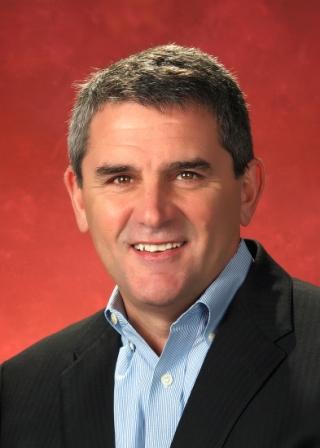After more than eight years as Avaya’s chief executive, Kevin Kennedy will be stepping down from that role as of October 1, 2017. He’ll be replaced by COO and Global Sales Leader Jim Chirico, who joined the company back in 2008. Chirico takes over a company that was once an unquestioned leader in its space but, due to several less-than-perfectly-managed scenarios, has left much of the market questioning its future.
 Avaya's next CEO, Jim Chirico
Avaya's next CEO, Jim Chirico
Dating back to Avaya’s acquisition of Nortel back in 2009, consensus has it that its massive legacy business didn’t allow it to fully embrace newer models, including the transition to cloud. While it has publicly embraced the transition to next-generation technologies and revenue models, including the acquisition of Esna Technologies in 2015, its legacy on-premises and networking customers always forced its hand, preventing a full-blown assault on the new age of communications and collaboration.
That’s not to suggest it hasn’t done well with Zang and its suite of on-demand cloud communications solutions. To the contrary, it has, and, in fact, Avaya’s overall revenues have been consistently strong and represent a growing customer base after its Chapter 11 filing, which is also reflective of an increased customer acquisition and migration strategy, which Zang General Manager Mohammad Nezarati noted back in March.
“It’s all about user acquisition the next 24 months,” he said. “Weed to move users onto the cloud and get them on a subscription model if we want to remain the 800-pound gorilla.”
That includes a heavy focus on adoption, not merely sales, with an understanding that a sale without adoption represents an easy case for displacement.
“Our target is having 80 percent of users using 80 percent of the functionality they have purchased,” he added. “If they use it, the recurring revenue is much more secure and there is a strong potential for future upselling.”
In fact, while competitors were chomping at the bit when Avaya filed – notably, ShoreTel, whose executives referred to Avaya’s “death spiral” as a huge opportunity – weren’t able to make as much of a dent in Avaya’s base as they hoped to. ShoreTel, apparently, was much less successful, considering it has been actively seeking buyers and just recently sold to Mitel. That, though, shouldn’t be surprising, considering ShoreTel executives, at the time, claimed Avaya’s cloud offering wasn’t “anything to write home about.”
Despite the momentum Avaya was able to build around its next-generation portfolio, the dark cloud of its legacy networking business and associated debt cast a dark shadow. When you consider the numbers, there was very little recourse other than the January bankruptcy filing, which, along with the sale of its networking assets to Extreme Networks, would signal the next phase in Avaya’s transition to a software and services business.
“The announcements today appear to indicate that there is some light at the end of the tunnel for the restructuring process, that Avaya could exit Chapter 11 as soon as October,” Frank Stinson, partner at IntelliCom Analytics, told me. “It is also particularly noteworthy that they plan to do so as a public company, and that is likely a key driver for the timing of the leadership transition.”
It appears that next phase of a cloud-centric Avaya is ready to be kicked into high gear, with Kennedy, who was at the helm through these recent struggles – but also for the creation of the Zang brand – leaving the position at the end of September. As for Chirico and the path forward for Avaya, with nearly 80 percent of its Q2 2017 revenue coming from software and services, it appears the course is set and Avaya is prepared to put up a fight.
“The promotion of Jim Chirico to CEO from his current COO role signals that the post-bankruptcy Avaya is likely to focus on execution of its existing business strategy rather than make any radical changes in focus, after having largely transformed to a software- and services-based business model while privately held,” Stinson added.
The landscape has changed, not only through recent consolidation, but also with the success of UCaaS providers, including CPaaS competitors Vonage/Nexmo and Twilio. But with the demons of the past out of the way, Avaya is prepared to take on the market head on again, looking to “remove the friction out of communications platforms for users,” according to Nezarati, as the company looks to regain its prominent positioning.